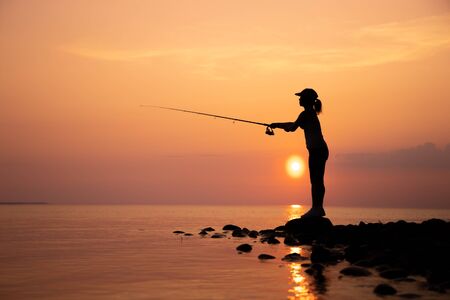1. Understanding the Importance of Local Fishing Regulations
If youre planning your first fishing trip in the U.S., one thing you definitely dont want to overlook is local fishing regulations. These arent just random rules made to make things complicated—they serve a real purpose and can actually make or break your outdoor adventure.
Why Do Fishing Laws Vary So Much?
Fishing laws differ from state to state, and sometimes even between individual lakes, rivers, or coastal areas. Thats because each location has unique fish species, environmental conditions, and levels of fishing activity. What’s legal in Florida might get you a hefty fine in California.
Here’s a quick look at how different states regulate fishing:
| State | License Required | Bag Limits | Size Restrictions |
|---|---|---|---|
| Texas | Yes (both residents and non-residents) | Yes (varies by species) | Yes |
| Minnesota | Yes | Yes | Yes (especially for walleye and northern pike) |
| California | Yes | Yes | Strict for ocean species like rockfish |
The Role of Regulations in Protecting Nature
The main goal of these rules is conservation. By limiting how many fish you can catch (bag limits), what size they must be, and where you can fish, local agencies help ensure that fish populations remain healthy and sustainable. Overfishing can quickly wipe out entire species if not managed properly.
You’re Not Just Breaking Rules—You’re Hurting the Ecosystem
Certain fish only spawn during specific seasons. If you catch them during that time, it could affect the next generation of that species. Some areas are also protected to preserve habitats for endangered wildlife—not just fish but also birds, amphibians, and plants that rely on the same ecosystem.
A Few Examples of Protected Species & Their Impact:
| Species | Status | Ecosystem Role |
|---|---|---|
| Bull Trout (Pacific Northwest) | Threatened | Keeps smaller prey fish populations balanced |
| Largemouth Bass (Various States) | No threat but heavily regulated | Apex predator in freshwater lakes; controls algae bloom indirectly |
A Little Research Goes a Long Way
The good news? Most state wildlife agencies have easy-to-read guides available online. A quick search before you head out can save you from fines, protect local wildlife, and ensure your first fishing trip is a success—not a disaster.
Ignoring local fishing regulations isnt just illegal—it disrupts delicate ecosystems and puts future fishing opportunities at risk. Respect the rules, and youll help keep Americas lakes, rivers, and oceans thriving for generations to come.
2. Common Consequences of Ignoring the Rules
If youre heading out on your first fishing trip, it’s easy to get caught up in the excitement—planning your gear, picking a spot, and dreaming about the big catch. But one thing many beginners overlook is checking local fishing regulations. Ignoring these rules can lead to serious trouble that could ruin your entire experience.
Hefty Fines
One of the most common consequences of breaking fishing laws is getting hit with a fine. In many U.S. states, these fines can range from $50 to several hundred dollars depending on the violation. For example, fishing without a license or keeping fish outside legal size limits are common infractions that carry penalties.
Confiscation of Gear
In some cases, if youre caught violating local laws, authorities may confiscate your fishing gear. That means you could lose your rod, tackle box, cooler—and anything else used during the illegal activity. This not only ruins your trip but also costs you even more money to replace the lost equipment.
Suspension or Revocation of Fishing Licenses
More serious offenses or repeat violations could result in your fishing license being suspended or revoked entirely. If that happens, you won’t be able to legally fish again for months—or even years—depending on state regulations.
Examples of Common Violations and Their Consequences
| Violation | Possible Penalty |
|---|---|
| Fishing without a license | $100–$500 fine |
| Keeping undersized fish | $150 fine + possible gear confiscation |
| Exceeding bag limit | $200+ fine + license suspension (in some states) |
| Fishing in restricted areas | $250+ fine + potential court appearance |
Play It Safe: Check Before You Cast
The bottom line? Always look up local fishing regulations before you hit the water. Each state—and sometimes each body of water—has its own set of rules. A few minutes of research can save you a lot of hassle and help make sure your first fishing trip is memorable for all the right reasons.
![]()
3. How to Research Regulations Before You Go
Before you grab your rod and head out, it’s crucial to know the fishing rules for the area youre visiting. Ignoring local regulations can lead to fines, gear confiscation, or worse—your trip being cut short. Luckily, finding accurate and up-to-date information is easier than ever.
Start with State Wildlife Agency Websites
Each U.S. state has its own wildlife or natural resources agency that manages fishing laws. These websites are goldmines for information like:
- License requirements
- Seasonal restrictions
- Catch limits and size regulations
- Special rules for specific bodies of water
Here’s a quick reference guide for some popular states:
| State | Wildlife Agency Website |
|---|---|
| California | wildlife.ca.gov |
| Florida | myfwc.com |
| Texas | tpwd.texas.gov |
| New York | dec.ny.gov |
Visit Local Bait and Tackle Shops
Bait shops arent just places to buy worms—theyre also great sources of local knowledge. The folks working there often fish in the area themselves and can tell you about:
- Recent changes in regulations
- Popular fishing spots and what’s biting
- Lesser-known local rules not always listed online
Check Mobile Apps and Online Forums
If you prefer using your phone, several mobile apps provide real-time updates on fishing regulations by location. Some popular ones include Fishbrain, iAngler, and the Fish Rules App. Online forums like Reddits r/Fishing or state-specific Facebook groups can also offer advice from fellow anglers.
Bonus Tip: Always Double-Check!
Laws can change seasonally or even weekly depending on fish populations. Even if youve fished an area before, take a few minutes to double-check before each trip. A little research goes a long way in keeping your first fishing experience fun—and legal!
4. Stories from Anglers Who Got It Wrong
Nothing brings a lesson home quite like real stories from the water. Many anglers—both new and seasoned—have learned the hard way that ignoring local fishing regulations can lead to more than just a bad day. Here are a few cautionary tales that show why it’s crucial to know the rules before casting your line.
🎣 A Beginner’s Costly Mistake in Florida
Jake, a beginner from Ohio, took his first saltwater fishing trip to Florida. Excited to reel in some big catches, he didn’t think twice about the local size limits for redfish. He caught one, snapped a photo, and proudly brought it back to shore—only to be met by a Fish and Wildlife officer.
The fish was undersized by just an inch. Jake ended up with a $250 fine and had to forfeit the fish. He later admitted he had no idea there were specific size rules for each species.
🎣 Experienced but Overconfident in California
Sandra had been fishing for over 20 years when she moved to California from Michigan. Confident in her skills, she assumed the freshwater limits would be similar. She went out on a solo trip and caught several trout—unaware that California has stricter daily bag limits and barbless hook requirements in some areas.
A routine check by a game warden led to multiple citations because she exceeded the limit and used illegal tackle. Even as a veteran angler, not checking the updated regulations cost her hundreds of dollars and nearly her fishing license.
🎣 The Group Trip That Went South
A group of friends planned a weekend fishing trip in Texas. None of them checked whether they needed fishing licenses or if there were seasonal restrictions on their target species, catfish and bass.
| Mistake | Consequence |
|---|---|
| No fishing licenses | $150 fine per person |
| Caught bass during closed season | Citation + fish confiscated |
The whole trip ended on a sour note, with over $1,000 in combined fines and no fish to take home. All because no one took five minutes to look up local rules online.
📌 What These Stories Teach Us
- Laws vary by state: Don’t assume what’s legal at home is okay elsewhere.
- Tiny mistakes matter: An inch or an extra fish can lead to big penalties.
- No license = big problem: Fishing without one is rarely forgiven.
If you’re planning your first fishing trip—or even your 50th—take these stories as reminders: always check local regulations, get your license, and make sure youre following both state and area-specific guidelines. A little preparation can save you from big headaches later on.
5. Best Practices to Ensure a Safe and Legal Trip
Planning your first fishing trip? That’s awesome! But before you cast your line, it’s super important to understand and follow local fishing rules. Ignoring them isn’t just risky—it can end your day with fines or worse. Let’s go over some easy-to-follow best practices that will help you stay legal, safe, and respectful of the environment.
Get the Right Permits
In most U.S. states, you need a valid fishing license. Whether youre fishing in freshwater or saltwater, make sure you have the right permit for the location and type of fish youre targeting. You can usually get one online from your state’s fish and wildlife agency or at a local tackle shop.
Example Fishing License Requirements by State:
| State | Resident License | Non-Resident License | Where to Buy |
|---|---|---|---|
| Florida | $17/year | $47/year | myfwc.com or local bait shops |
| California | $58/year | $158/year | wildlife.ca.gov or sporting goods stores |
| Texas | $30/year | $58/year | tpwd.texas.gov or Walmart |
Know Your Catch Limits
Catching too many fish or keeping undersized ones can land you in hot water. Every region has its own rules about how many fish you can keep and what size they must be. These limits help protect fish populations so everyone can enjoy fishing for years to come.
Quick Catch Limit Tips:
- Check daily bag limits: This is the number of fish you’re allowed to keep per day.
- Measure your catch: Use a ruler or measuring board to make sure your fish meets the minimum size requirement.
- Use a fish ID guide: It helps you correctly identify species with similar looks but different regulations.
Follow Seasonal Restrictions
Certain times of year are off-limits for catching specific species due to spawning seasons. Fishing during these closed seasons—even by accident—can lead to penalties. Always double-check if the species you’re after is in season before heading out.
Common Seasonal Closures:
- Striped Bass: Often protected during spring spawning months in many states.
- Lobster & Crabs: May have closures in summer/fall depending on region.
- Salmon: Controlled tightly with specific open/close dates per river system.
Practice Conservation Techniques
If youre not planning to eat your catch, be kind and release it properly. Using barbless hooks, wetting your hands before handling fish, and minimizing air exposure can make a big difference in survival rates.
Catch & Release Best Practices:
- Avoid dry hands: They damage a fishs protective slime coat.
- No squeezing: Gently support the fish under the belly and tail.
- Quick release: Get the fish back into the water ASAP—ideally under 30 seconds out of water.
Treat Nature—and Others—with Respect
A successful trip isn’t just about catching fish. Its also about being respectful—of nature, other anglers, and local communities. Clean up after yourself, don’t crowd others on shorelines or boats, and follow all posted signs near waterways.
If you stick to these simple best practices, your first fishing trip will be not only fun but also fully legal and eco-friendly!


